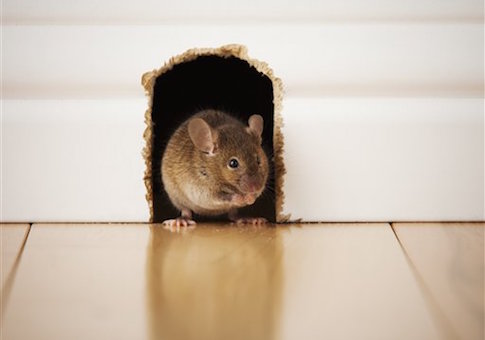The National Institutes of Health has invested more than $80,000 into studying whether mice stutter.
A $16.5 million project examining genetic mutations that may lead to human stuttering recently released some of its findings: genetically-engineered mice that sound different.
The portion of the study dedicated to developing the mice that model human stuttering in the study represent less than 0.5 percent of the costs of the research to date, according to the NIH—an estimated $82,822.31.
"You might not expect mice to tell us much about human speech disorders," the agency said in a write-up of the study last week. "But, in fact, a new study from researchers at Washington University in St. Louis and the National Institute on Deafness and Other Communication Disorders (NIDCD) shows that mice could teach us a lot about what makes people stutter, and perhaps also how to help them stop."
The results, published in Current Biology, found that mice that were genetically engineered to carry a trait linked to human stuttering showed "changes in the pattern of their calls."
"Many aspects of the vocalizations of our mice with the mutation are normal," said Terra Barnes, Ph.D., of Washington University in St. Louis, who is working on the study. "Where they differ is in the timing and temporal sequencing of their vocalizations. Their vocalizations have longer pauses than those of their littermates without the mutation, and there is evidence for more stereotyped repetitions in their vocalizations. These are very similar in some ways to the stuttered speech of humans who carry the same mutation."
"The findings suggest that mice could lead to a new understanding of stuttering," the NIH said. "They may ultimately also lead to treatments with the potential to help millions of people around the world who stutter.""
The article states the work was supported by several NIH grants, including a National Institute on Deafness and Other Communication Disorders project that has received $16,564,461 since 2007.
The study is working to identify "genetic mutations that may cause stuttering," as well as developing "a mouse model of human stuttering." Heading the project is Dr. Dennis Drayna, a leading scientist for the National Institute on Deafness and Other Communication Disorders.
The project has also recruited families of married cousins in Pakistan who stutter.
"In the past year we have performed additional family ascertainment and recruitment in Pakistan," the grant said. "This has resulted in the enrollment of six new consanguineous families, all characterized by a high density of individuals with persistent stuttering."
"Linkage analysis in these families has been completed, and we have discovered that variant genes located on chromosomes 3 and 16 are the cause of stuttering in some of these families," the grant said.
As for the mice, the researchers have not figured out how to make the rodents stutter just yet.
"These mice aren’t stuttering, but they show a lot of features that are similar to a human that stutters, so this is an incredibly powerful research tool," Barnes told the Guardian.
"This is a huge first step towards an animal model of stuttering," she said.
The National Institute on Deafness and Other Communication Disorders estimates three million Americans stutter, the majority of which are young boys. Most outgrow their stutter after childhood and only "1 percent or less of adults stutter."
"The research project has identified mutations in several genes linked to persistent stuttering in humans through family- and population-based genetic methods and other approaches," the NIH said.
"Building upon earlier studies that identified gene mutations associated with stuttering in people and research that linked stuttering to brain function, this research uses an animal model in order to better understand the molecular, cellular, and neurological basis of the disorder."
